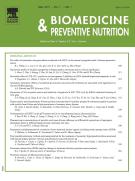Fatty acid composition of lipids in wild Cordyceps sinensis from major habitats in China - 14/03/12
 , Jiang-Hai Wang b, ⁎
, Jiang-Hai Wang b, ⁎ 
Abstract |
Wild Cordyceps sinensis (WCS) is considered to be one rare and valuable medicinal fungus for preventing and treating diverse chronic diseases, and its quality and price vary hugely with different producing areas. However, the determination of geographic origin has long been hindered by uncertainties of existing methods. Lately, it has been found that the fatty acid composition in lipids may be used to access geographic origin. Seventeen fatty acids were identified and their relative and absolute contents were measured by gas chromatography−mass spectrometry (GC−MS) in these samples with C16:0, C18:0, C18:1 and C18:2 as major constituents including linolenic acid (C18:3) (1.02−4.83%). Total unsaturated fatty acids (75.74−90.87%) are evidently enriched compared with the other common fungi. Based on the specific fatty acid composition in lipids, the influences of environmental temperature and humidity on lipid synthesis in WCS are discussed, and the fatty acid profile and the ratio of C18:1/C18:2 in polar lipids are suggested to be two potential indicators for determination of geographical origin.
Le texte complet de cet article est disponible en PDF.Keywords : Fatty acids, Lipids, Tibetan Plateau, Wild Cordyceps sinensis (WCS), Medicinal fungi
Abbreviations : WCS, GC−MS, HPLC, PE, THF, FAMEs, UFA, SFA, C14:0, C14:1, C15:0, C16:0, C16:1, C17:0, C17:1, C18:0, C18:1, C18:2, C18:3, C20:0, C20:1, C20:2, C22:0, C22:4, C24:0
Plan
Vol 2 - N° 1
P. 42-50 - janvier 2012 Retour au numéroBienvenue sur EM-consulte, la référence des professionnels de santé.
L’accès au texte intégral de cet article nécessite un abonnement.
Déjà abonné à cette revue ?

